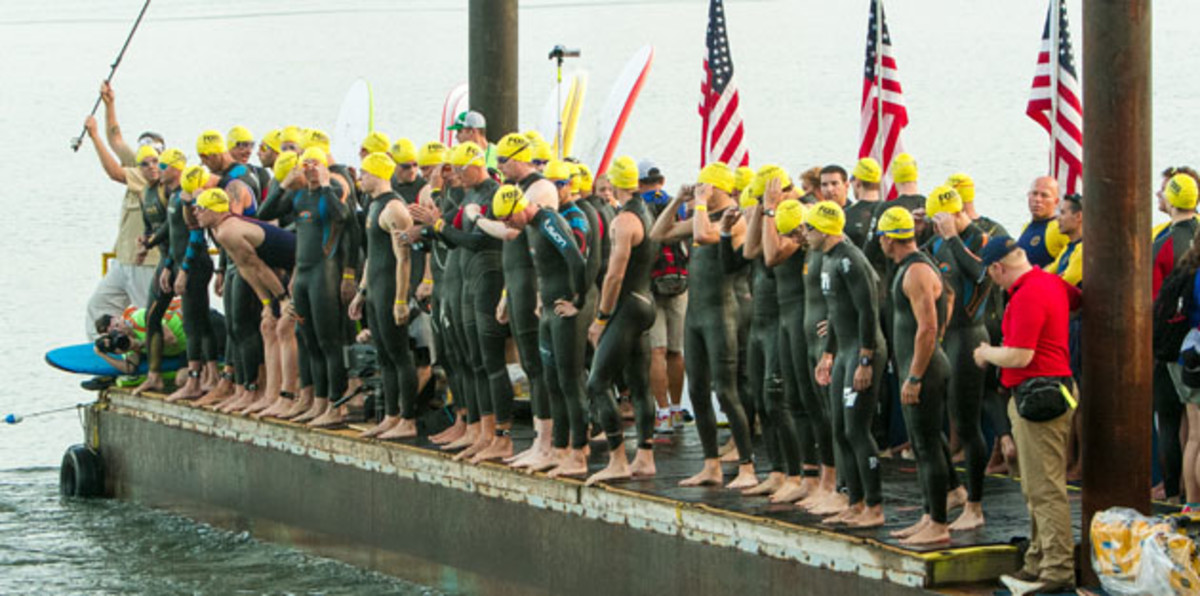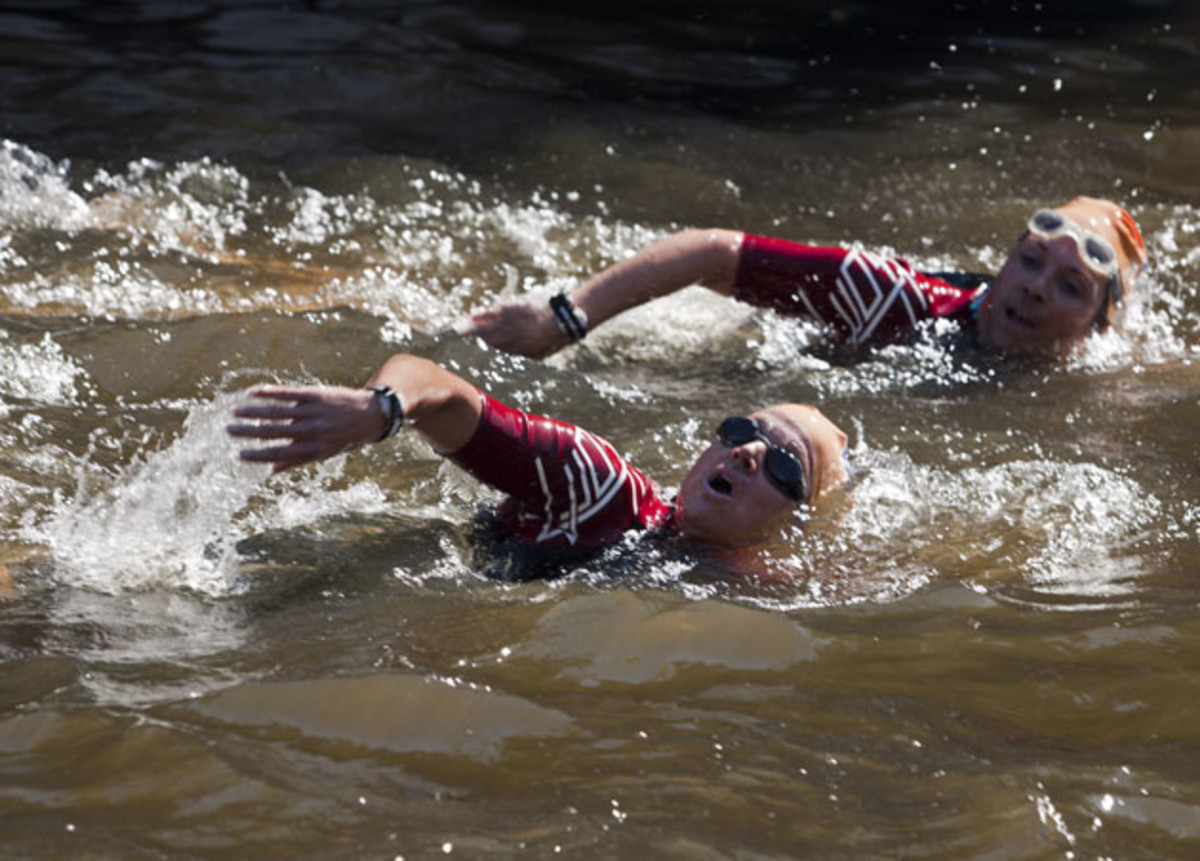Dive in, New York! The wonder of swimming in the Hudson

On steamy summer weekends in New York City, thousands of people flock to city pools or sandy public beaches, while some, more hardy, folks gather at a more unexpected location: the banks of the Hudson River.
Despite the unsanitary image associated with the waterway, nearly 6,500 people participated in 36 public swim events in the Hudson River or other New York City waters in 2014, according to Riverkeeper, a non-profit group focused on rivers and tributaries of the nation’s largest city. And, contrary to popular belief, recreational swimming in the Hudson is not illegal. Some of the organized swims are held for charity—for example, this Sunday's inaugural New Amsterdam City Swim will celebrate Global ALS Day and Father’s Day with a 1500-meter swim race from Hudson River Park’s Pier to Pier 26, to raise money for medical research for ALS. Other Hudson swims are segments of larger athletic events, such as the New York City Triathlon. Ireland native Paul Browne says that his favorite part of the annual 1500m swim/40K bike/10K run race is putting on his goggles and hopping off the dock at 99th Street for the event’s opening leg.

“The first year I swam, in 2008, there were jellyfish in the water, but since then it’s been a good experience,” says Browne, who’s competed in 12 triathlons, two half Ironmans, two full Ironmans and six marathons. “The Hudson is actually one of the easiest swims because of the strong current—you can actually lie on your back and float down the river.”
Before every event, swim organizers conduct their own tests of the water, while Riverkeeper also tests samples once a month during the recreational season (between May and October) at 74 locations in the Hudson River estuary. The tests measure for fecal-indicating bacteria and determine whether the water is fit for swimming, according to the standards set by the Environmental Protection Agency (EPA), and Riverkeeper posts the data reports on its website www.riverkeeper.org. The group’s water quality program manager, Dan Shapley, says that although the monthly samples provide the best snapshots for a particular day, race organizers are urged also to look at historical patterns to ensure safety for swimmers.
Stig Severinsen seeking to make the dangerous game of freediving safer
“The variation from place to place can be pretty dramatic, and water quality can be affected by rain and other factors,” says Shapley. “We urge organizers to test the water beforehand and to be open and honest about any risks, so that racers can make decision for themselves.”
After swimming in NYC races since 2003, Capri Djatiasmoro is aware of the potential health hazards that come with a dip in Hudson—stomach illness, ear or eye infections, and nausea—but she still prefers the open water to swimming in the pool.
“It’s actually a really nice mix of salt and fresh water and it’s pretty clean, relatively speaking—it’s not the Virgin Islands but I’ve seen more sea life in recent years,” says Djatiasmoro, who helps pool swimmers make the transition to open water. “The difference is that you can’t see to the bottom—there’s no blue line to follow like in the pool—so you have to sight landmarks and check your position and direction so you don’t swim in circles.”
Djatiasmoro says it’s important for swimmers to feel comfortable and relaxed in the water. “Most people freak out in the first 50 yards,” she says. “But if you can get past that initial panic and anxiety and control your breathing, you can do it.”
Just last weekend athletes completed the 8 Bridges Hudson River Swim, the world’s longest marathon swim, and approximately 400 swimmers are expected for Sunday’s New Amsterdam City Swim, which will mark the first step of global expansion for the Netherlands charity race that began in 2012.

“Three years ago, 14 friends decided to participate in an ALS charity swim across the Hellespont in Turkey and were inspired to organize the first official ‘Amsterdam City Swim’ on September 9, 2012, for the benefit of ALS research,” says race committee member Hester Nadari-van den Berg van Saparoea. “Over 1,100 swimmers jumped into the canals of Amsterdam and together raised more than $922,000. This U.S. event was named because New York used to be called ‘New Amsterdam’ when the Dutch established the city in 1626.”
Sunday’s race also meets athletes’ swimming requirements for the July 19 NYC Triathlon. After missing the race due to hip surgery last year, Browne hopes to compete in this year’s triathlon and shared some advice for both first-timers and open-water veterans competing in any swim event in the Hudson River this summer.
“Stay out as far as possible to the right to harness the best current,” he says. “Wear ear plugs and try not to drink any of the water!”
